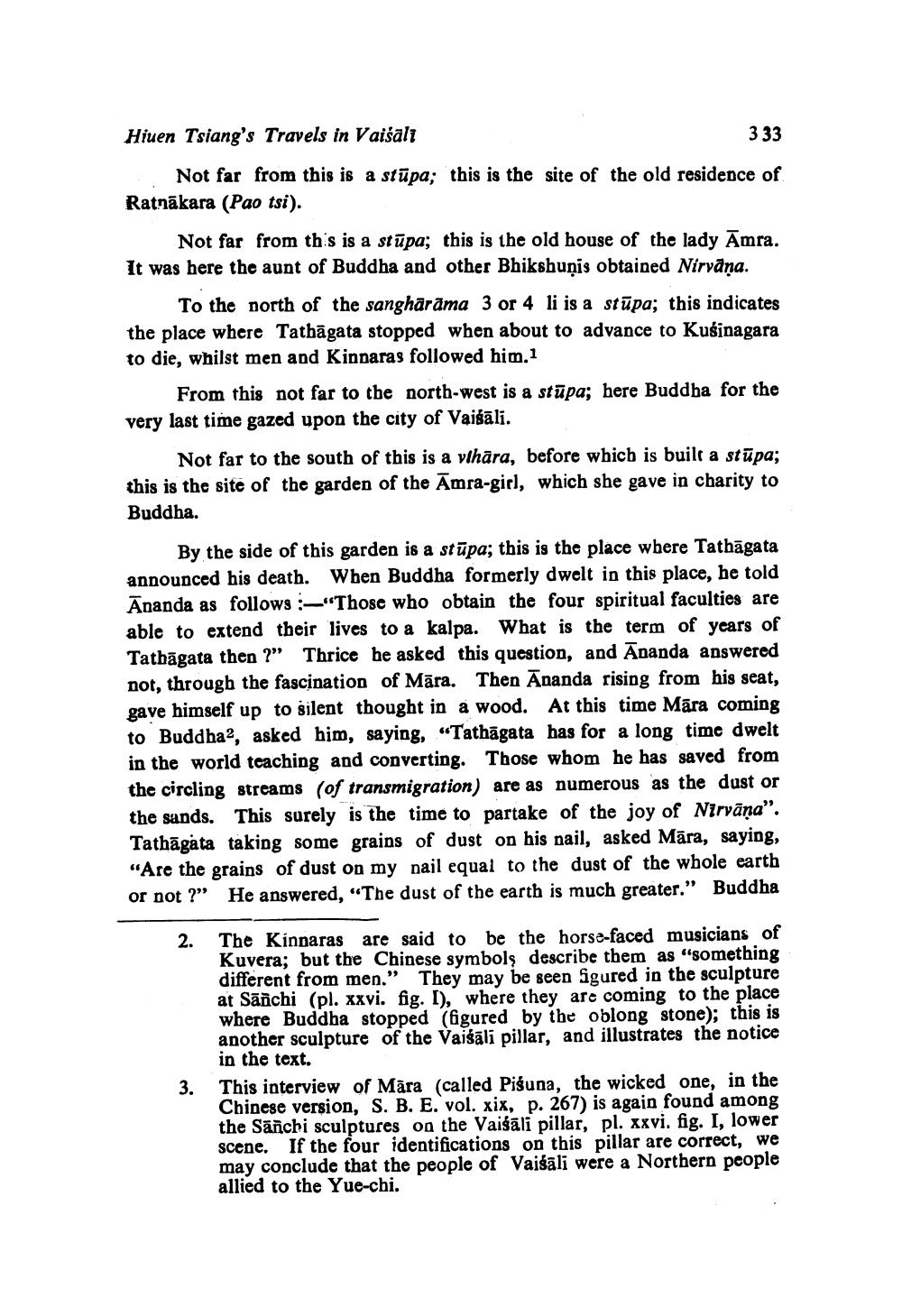________________ Hiuen Tsiang's Travels in Vaisali 333 Not far from this is a stupa; this is the site of the old residence of Ratnakara (Pao tsi). Not far from this is a stupa; this is the old house of the lady Amra. It was here the aunt of Buddha and other Bhikshunis obtained Nirvana. To the north of the sangharama 3 or 4 li is a stupa; this indicates the place where Tathagata stopped when about to advance to Kusinagara to die, whilst men and Kinparas followed him.1 From this not far to the north-west is a stupa; here Buddha for the very last time gazed upon the city of Vaigali. Not far to the south of this is a vihara, before which is built a stupa; this is the site of the garden of the Amra-girl, which she gave in charity to Buddha. By the side of this garden is a stupa; this is the place where Tathagata announced his death. When Buddha formerly dwelt in this place, he told Ananda as follows: "Those who obtain the four spiritual faculties are able to extend their lives to a kalpa. What is the term of years of Tatbagata then ?" Thrice he asked this question, and Ananda answered not, through the fascination of Mara. Then Ananda rising from his seat, gave himself up to silent thought in a wood. At this time Mara coming to Buddha, asked him, saying, "Tathagata has for a long time dwelt in the world teaching and converting. Those whom he has saved from the circling streams (of transmigration) are as numerous as the dust or the sands. This surely is the time to partake of the joy of Nirvana". Tathagata taking some grains of dust on his nail, asked Mara, saying, "Are the grains of dust on my najl equal to the dust of the whole earth or not ?" He answered, "The dust of the earth is much greater." Buddha 2. The Kinnaras are said to be the horse-faced musicians of Kuvera; but the Chinese symbols describe them as "something different from men." They may be seen figured in the sculpture at Sanchi (pl. xxvi. fig. I), where they are coming to the place where Buddha stopped (igured by the oblong stone); this is another sculpture of the Vaisali pillar, and illustrates the notice in the text. This interview of Mara (called Pisuna, the wicked one, in the Chinese version, S. B. E. vol. xix, p. 267) is again found among the Sanchi sculptures on the Vaisali pillar, pl. xxvi. fig. I, lower scene. If the four identifications on this pillar are correct, we may conclude that the people of Vaisali were a Northern people allied to the Yue-chi. 3.




